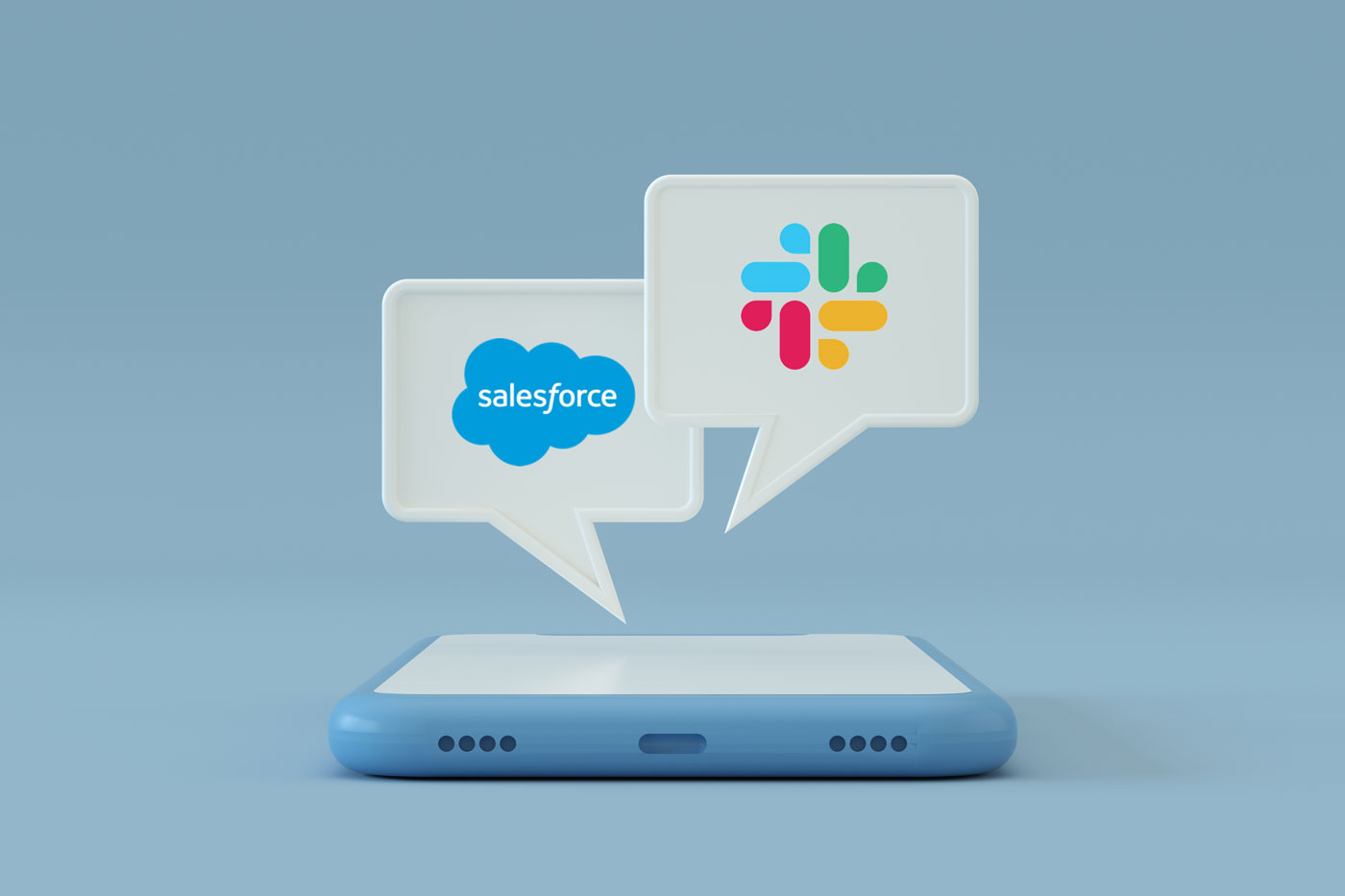Written By:
The CRM Firm
In the rapidly evolving world of digital communication, Slack has established itself as a leading platform for team collaboration. Whether you’re a small startup or a large corporation, Slack can help streamline your communication and enhance productivity. However, before investing in this platform, there are several factors to consider.
Understanding what Slack can do for your business
There are two primary reasons to use Slack: collaboration and integrations.
Team Collaboration
One cannot overstate the benefits of Slack when it comes to team communication and collaboration. Slack fosters an environment of seamless interaction, allowing team members to exchange ideas, share updates, and work together on projects with ease. Escape your email inbox and replace both internal and external communication with asynchronous messaging in a Slack channel.
Slack channels can be organized by project, topic, or team, making it easier to track conversations and maintain focus on specific areas. This organization helps reduce the clutter and confusion that often accompanies email communication, where important messages can get lost in a crowded inbox.
A key advantage of Slack, particularly for diverse groups such as sales teams, project teams, and business departments like IT and HR, is its support for asynchronous communication. Team members across different time zones or working schedules can send and receive messages at their convenience, thus enhancing productivity and accommodating individual work patterns. This asynchronous communication style is especially beneficial for these varied teams, as it helps save time, reduces the pressure of immediate response, and allows members to thoughtfully craft their responses and contribute more effectively to discussions. The result is a more flexible, inclusive, and efficient communication process that can significantly boost team performance.
Integration with Other Tools
Slack’s integration capabilities are a significant asset, offering seamless connections with a variety of tools and platforms, including CRM systems like Salesforce and Hubspot, project management applications such as Jira, and file-sharing solutions like Google Drive. Available through the Slack App Directory or a Salesforce app on the Salesforce AppExchange through your Salesforce account, these integrations provide a robust link between your disparate business platforms and Slack.
Utilizing a Salesforce integration, users gain access to a suite of tools that work with Sales Cloud and Service Cloud, creating a streamlined workflow that accommodates both standard and custom objects. This integration allows for direct interaction with Salesforce records, enabling comprehensive management and the execution of the next best actions, thus optimizing the workflow.
Enhancing Remote Work
The power of Slack integration becomes particularly apparent in enhancing remote work. It allows users to engage in asynchronous messaging while accessing various collaboration tools on the same platform, streamlining processes and improving efficiency. With Slack actions, users can manage tasks in Jira, for instance, by creating, commenting, assigning, requesting approvals, and updating them in real-time all within Slack’s unified interface, thus eliminating the need to switch between different systems.
The possibilities for customization and integration within Slack are virtually boundless, especially when a specific Slack App does not yet exist. Utilizing APIs, you can configure custom integrations that span from email alerts to webhooks, catering to both developers and non-technical users alike. These code and no-code integrations can be applied globally across your Slack workspace or targeted to specific channels, enhancing the platform’s versatility.
For example, even without a pre-existing Slack App to connect Salesforce Marketing Cloud Engagement, a custom Slack App can display send Salesforce data and metrics on the app’s home screen right in your Slack workspace, or send Slack notifications when automations fail, or when new leads come in. Additionally, Slack actions can be built to manage subscriber information, create data extensions, or upload assets directly through Slack messages.
Security Measures
Given the sensitive nature of business communication and the need to integrate applications into your business processes securely, choosing a collaboration platform with robust security features is paramount. Slack offers enterprise-grade data protection and compliance standards, which include data encryption, two-factor authentication, and granular control over user permissions, essential for safeguarding your integrated business processes and customer data.
However, when planning to bring Slack into your suite of products, it is crucial to meticulously assess the security measures provided to ensure they align with your company’s standards and requirements, thereby maintaining the integrity and confidentiality of your business communications.
Cost-Effectiveness
Slack users can choose from a free plan, as well as three tiers of paid plans.
The free Slack plan is suitable for small teams, providing essential features such as messaging and up to 10 integrations. It allows teams to communicate effectively and asynchronously. However, message and file history is only retained for 90 days, Slack Connect will only support one-on-one communication, and automation is not available.
As for the paid plans, at the top-end Salesforce offers Slack Enterprise Grid, which is ideal for complex businesses and those who have acquired other companies that use Slack. If this sounds like you, the price tag could run well over $1 million per year.
For businesses that don’t need multiple business units under one umbrella, but still want a high level of control and oversight into their organizations’s use of Slack and the ability to use SAML-base SSO, Business+ is a great option. Business+ is $15 per person per month, or $12.50 per person per month if paid annually.
For small to medium businesses that do not need the level of control and oversight that includes SAML-based SSO, data exports, SCIM provisioning, or the ability to analyze Slack usage in external analytics tools, Slack Pro is a great option. Slack Pro comes in at $8.75 per person per month, or $7.25 per person per month when billed annually. Slack Pro comes with complete message history, unlimited integrations, and the ability to communicate and collaborate with outside organizations that also use Slack.
Conclusion
Investing in Slack can significantly transform communication and productivity for your team, especially if you are a Salesforce customer looking to integrate Slack with your Salesforce org.
Slack bridges the gap between your communication and customer management systems, enhancing collaboration and efficiency. However, this decision should be approached with careful consideration of factors such as cost-effectiveness, the potential for seamless integration, and robust security measures.
By evaluating these aspects, you can make a well-informed choice that will bring long-term benefits to your team and ensure a successful integration of Slack into your Salesforce ecosystem.
It is essential to take the time to design your Slack workspace during the implementation process. Slack is not a plane that should be built while flying. Reach out to The CRM Firm where Salesforce and Slack Consultants and Developers can ensure that your Slack integration is designed for success.




